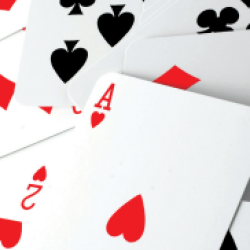Source Institutions
Source Institutions
Add to list Go to activity
Activity link broken? See if it's at the internet archive

In this math game (Page 14 of the Are You Game? PDF), learners determine the probability of getting an even versus an odd product using the numbers on a regular deck of cards. In the follow-up activities, learners prove by example why the even products are more likely to occur than the odd products.
- Under 5 minutes
- 10 to 30 minutes
- 1 cent - $1 per group of students
- Ages 8 - 14
- Activity, Game, Lesson/Lesson Plan
- English
Quick Guide
Materials List (per group of students)
- One deck of cards (NOTE: remove all face cards; aces count as ones)
- Game board
- Game pieces
- OPTIONAL: multiplication charts
Subjects
-
Mathematics
-
Data Analysis and Probability
- Probability
-
Number and Operations
- Multiples and Factors
- Operations
-
Data Analysis and Probability
-
The Nature of Technology
-
The Design Process
- Problem Solving
-
The Design Process
Informal Categories
- Games
- Toys
Audience
To use this activity, learners need to:
- see
- read
- touch
Learning styles supported:
- Involves hands-on or lab activities
Other
Includes alignment to state and/or national standards:
This resource is part of:
- The Actuarial Foundation Math Teacher & Student Resources
- Math Academy: Are You Game? Explorations in Probability (Page 14)
Access Rights:
- Free access
By:
- Rimbey, M.Ed., NBCT (Math), Kimberly
Rights:
- All rights reserved, The Actuarial Foundation, 2007
Funding Sources:
- Ernst & Young
- New York Life Foundation
- Swiss Re
- Towers Perrin
